By Jen Del Carmen
Share
By Jen Del Carmen
Share
Since 2001, Egypt’s demand for soybeans has grown significantly and the U.S. soy industry has worked to expand and support this emerging market.
Over the past 20 years, when it began to implement soybean meal utilization seminars, USSEC has been working to develop the Egypt market by executing a number of activities. USSEC sponsored trade teams’ visits to the U.S.; engaged Egypt’s aquaculture sector; developed a series of buyers’ and sellers’ workshops, including risk management training and an annual regional conference for key customers; and started a series of processing and refining workshops. Today, USSEC’s activities range from soybean processing to poultry, aqua, and dairy production, delivering a firm understanding of the high quality of U.S. soybeans and meal to producers. In addition to building Egyptian customers’ knowledge of U.S. soy’s quality, these activities have worked to build preference and demand, open new markets, and increase U.S. soy exports to Egypt and the Middle East/North Africa (MENA) region.
Poultry and fish are the major consumers of soybean meal in Egypt, and over the past 20 years, Egypt’s chicken production has more than doubled to meet demand for domestic consumption. The country’s crush sector has advanced with the poultry sector. As its crush and feed sectors have evolved in recent years – especially since 2016 – Egypt has moved from primarily being a soybean meal importer to importing whole soybeans. As its crush industry has grown, preference for U.S. soybeans has grown alongside it.
During the same timeframe, aquaculture in Egypt grew more than 700%, and aquafeed demand has approached 2 million metric tons (MMT), with soy demand of 750,000 metric tons (MT). In 2017, Egypt grew from importing less than 200,000 MT of U.S. soybeans to importing about 2.5 MMT. Egypt now sources more than 80 percent of its soybean imports from the United States.
This summer, Egypt temporarily halted imports of U.S. soybeans due to short supply in the United States. They have now, however, resumed U.S. soy imports, anticipating a reliable supply after U.S. harvest this fall.
The Soy Excellence Center, founded in 2019, is USSEC’s most recent investment to support this steadily growing market. In just the two years since its inception, 46 programs have been carried out between September 2019 and September 2021 with 4680 participants. SEC programs include poultry and aquaculture related webinars, In Pond Raceway System (IPRS) aquaculture demonstrations, and strong coordination with local industry.
At the end of August, USSEC slowly began to resume in-person meetings in Egypt, including two trainings at the SEC in Cairo, one of which was held in person.
More than 100 key poultry producers and industry leaders from Egypt and the MENA region attended the USSEC’s 19thPoultry Production Training Program, held in cooperation with the Egyptian Poultry Association and Faculty of Agriculture at Cairo University on August 31. The program addressed practical issues affecting commercial poultry production in the Middle East and North Africa.
USSEC consultant Dr. Gary Butcher, a poultry veterinarian with the University of Florida, College of Veterinary Medicine, presented lectures on infectious bronchitis variants in the MENA region, identifying common causes for vaccination failure, and antibiotic resistance in commercial poultry. Butcher partnered with Drs. Atta and Shalash, faculty from Cairo University’s agriculture department, to provide this information. The program addressed practical issues affecting commercial poultry production in the Middle East and North Africa regions.
Butcher visited major Egyptian poultry integrations, addressing topics of special interest to these companies in detail. Disease challenge is high in this region and prevention and control is essential as these industries develop and expand. USSEC is playing an integral role in ensuring the success of this important soybean consumer.
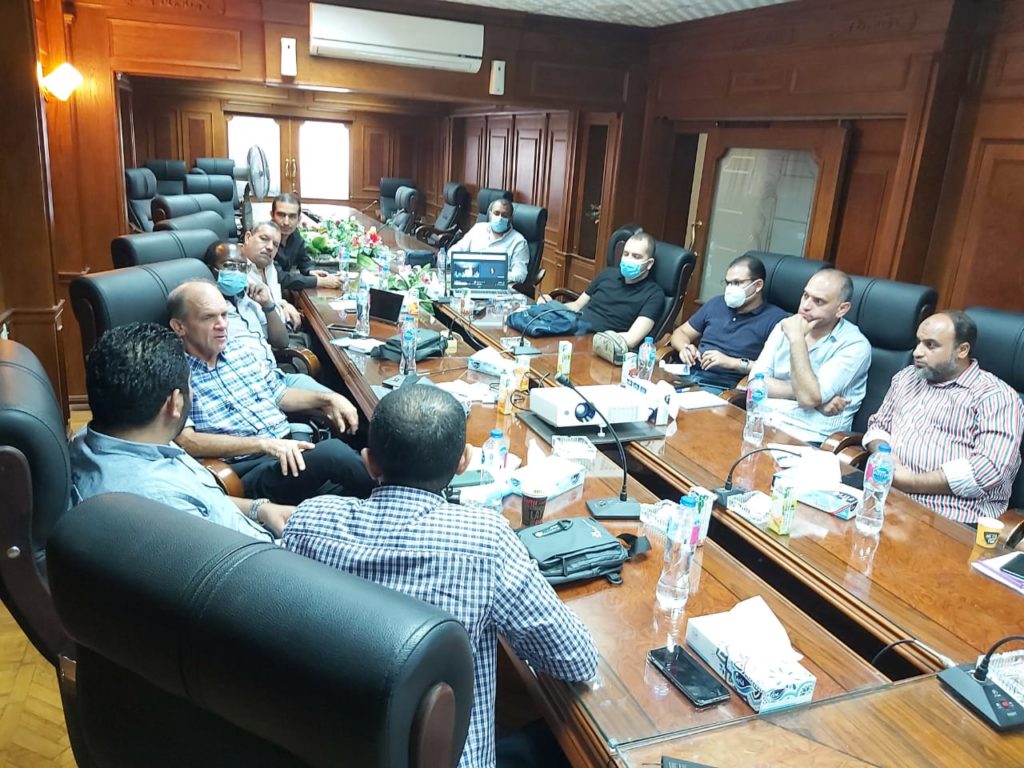
Dr.-Gary-Butcher-speaking-to-Poultry-Farm-Managers-at-the-Egyptian-Poultry-Association-1024×768
Butcher speaks to poultry farm managers at the Egyptian Poultry Association

Egypt
Atta, Gharib, Butcher, Wakileh, and Elmenawey at Cairo University
On September 1, more than 70 aquaculturists from Egypt and the MENA region attended USSEC’s IPRS construction, operation, and management training program, held virtually in cooperation with WorldFish Egypt. Webinar participants included Dr. Dominique Bureau (Canada), and Dr. Diaa Al-Kenawy and Dr. Ahmed Nasr-Allah of WorldFish.
USSEC consultant Philip “Skip” Kemp of Kemp Fisheries presented four talks during the virtual program on the four aspects of In-Pond Raceway System: principles, construction, operations, and water quality. In addition to the webinar, Kemp met with Al-Kenawy and Nasr-Allah separately to discuss the overall progress of IPRS in Egypt.
Kemp made site visits to five locations where IPRS has been constructed in the past two years and one location sponsoring a USSEC feeding trial for polyculture of tilapia and shrimp in brackish water ponds, saying he was impressed with the new construction at the General Authority for Fisheries Resources Development (GAFRD) facilities and that the operators seemed to be enthusiastic to learn more details about using the systems. The theme for the site visits became an opportunity to teach the operators how to measure water velocity in the raceways, to explain the need to maintain proper flow rates, and how to adjust whitewater units. At each site, Kemp used available PVC and materials to quickly make velocity measuring devices, demonstrating their use to the operators with the goal that this would stimulate the thought process for understanding the importance of water flow and velocity.
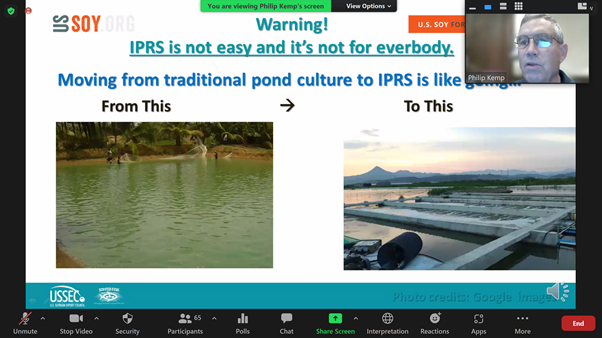
Moving-from-Traditional-Pond-Culture-to-IPRS
Kemp discussed moving from traditional pond culture to IPRS
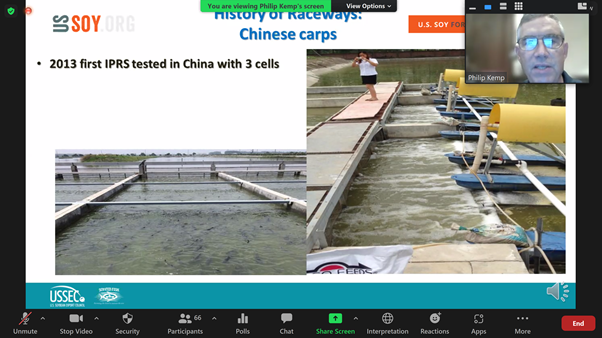
2013-First-IPRS-Tested-in-China-with-3-Cells
2013 First IPRS Tested in China with 3 Cells
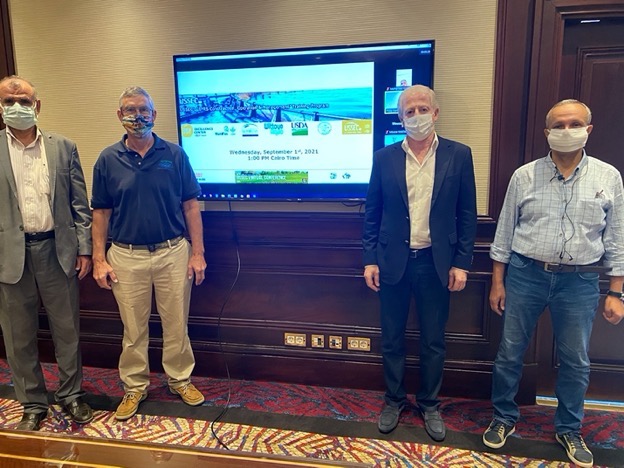
Egypt2
Naser-Allah, Kemp, Wakileh and Al-Kenawy during the training program
As the Egyptian market continues to grow, USSEC will continue to engage with the soy value chain, including poultry producers, aqua producers, feed millers, nutritionists, and key government officials through its upcoming SEC events targeting the aquaculture and poultry industries.
Later this year, USSEC plans to hold its Sixth Regional Aquaculture Production Conference and to conduct IPRS demonstrations as well as polyculture of tilapia and shrimp farming. This effort aims to help Egyptian aquaculture producers move into sustainable farming solutions and to increase fish production and farmers’ profits, economic returns, and benefits with minimal impact on the water environment.
This story is sponsored by the United Soybean Board.
148 Comments
Leave A Comment
You must be logged in to post a comment.
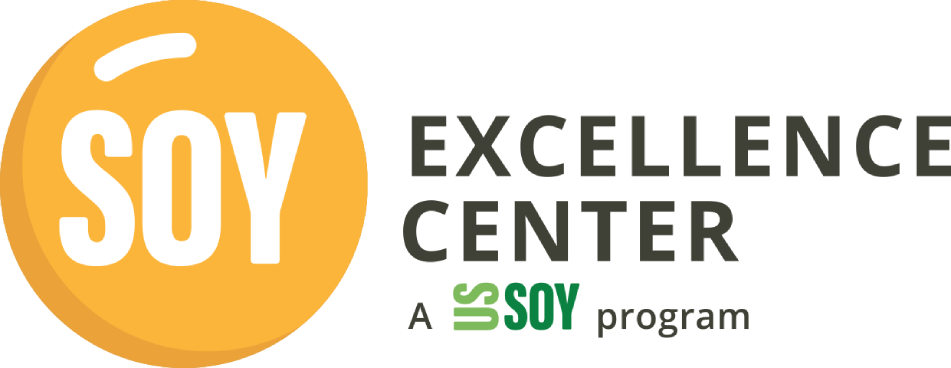


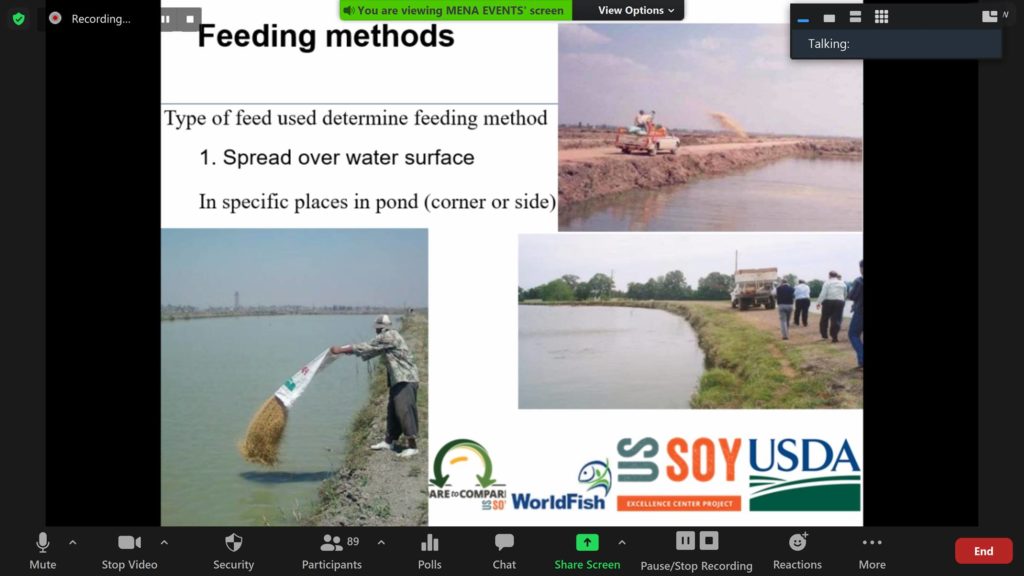
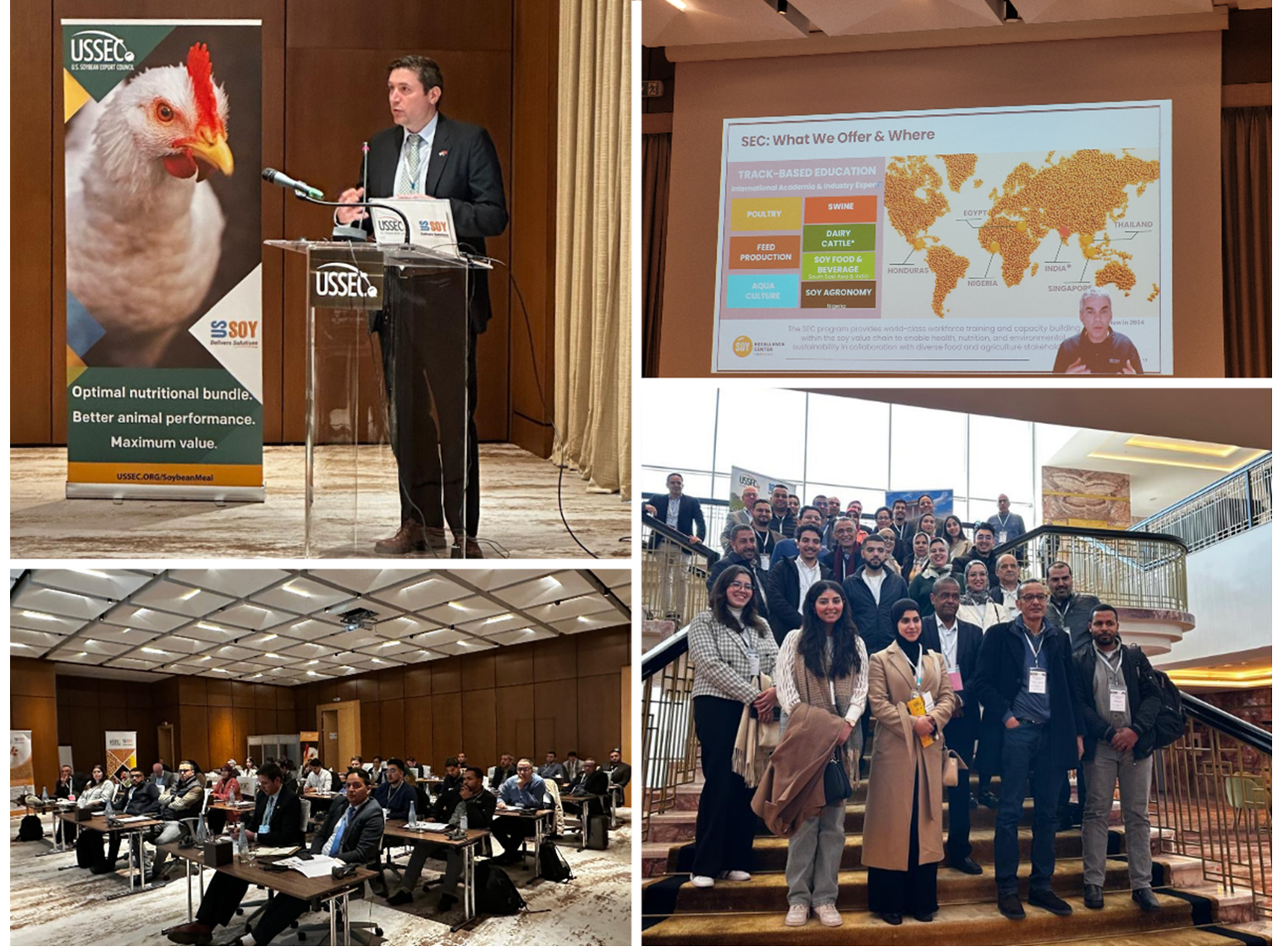

Wonderful, very beautiful
Great job
muy buena la iniciativa
good job
muy bien
>>Good>>
this is really impressive. Reading this article just heighten my interest once more in shrimp farming. I must confess that the USSOY is doing an amazing job.
Good